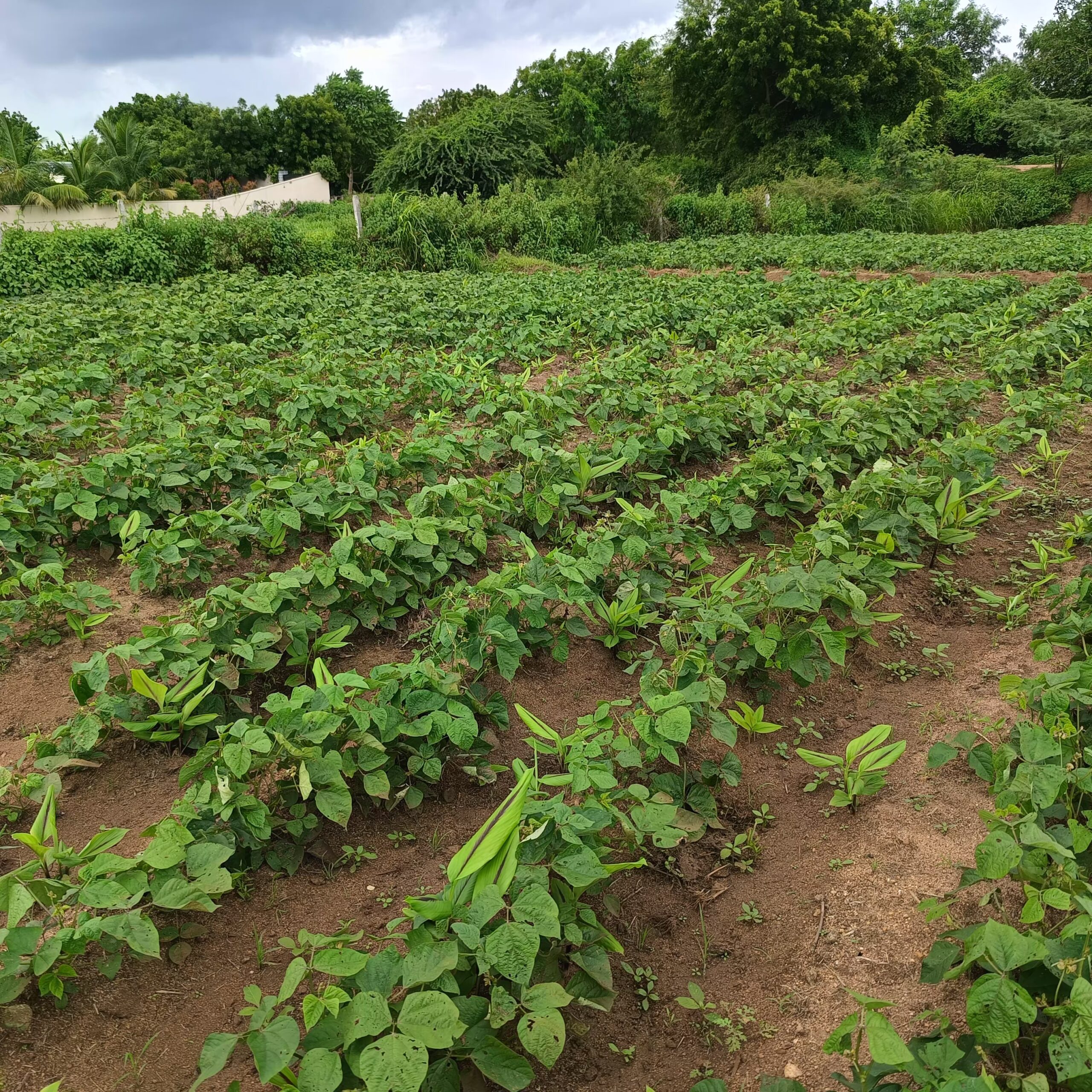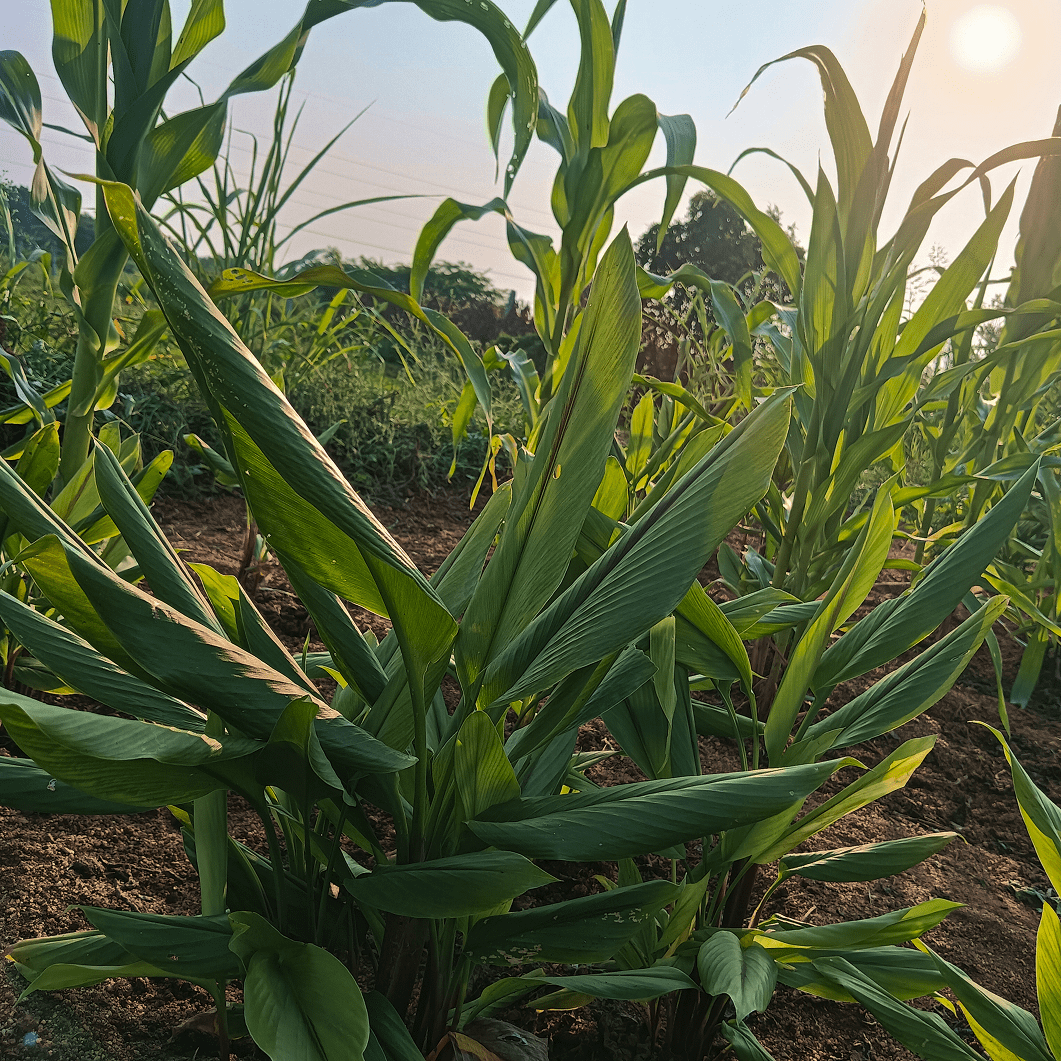Menu
Regenerating Soil Health in Turmeric Cultivation: A Sustainable Approach
16 Dec 2024
•
3 min read
Introduction
Soil health is the foundation of sustainable turmeric cultivation. However, modern farming challenges—such as soil degradation, declining microbial diversity, and over-reliance on chemical inputs—threaten long-term productivity. At RegenCrops, we implemented scientific, regenerative agriculture strategies to restore soil structure, enhance microbial life, and improve nutrient cycling in turmeric fields.
Below, we outline the strategies adopted to improve soil health, followed by the measurable impacts observed during implementation.
Strategies for Soil Health Improvement
- To rebuild soil organic matter, we incorporated high-carbon organic amendments to improve soil s fertility over time.
- We integrated different crops between turmeric crop and planting cycles to promote biological nitrogen fixation, suppress weeds, and improve soil microbial activity. Their decomposition further enhanced soil organic matter and nutrient release.
- Instead of relying solely on synthetic fertilizers, we adopted a biofertilizer-based nutrient program. This approach enhanced soil microbial diversity, nutrient solubilization, and root-zone health.
- A structured irrigation management system was implemented using moisture conservation, and strategic irrigation scheduling. These techniques prevented nutrient leaching, reduced over-irrigation, and maintained optimal soil moisture levels.
- To reduce soil-borne pests and diseases, we used biological control agents, botanical extracts and other ecological interventions. This approach minimized the need for chemical pesticides, allowing the soil microbiome to remain balanced and resilient.
- We integrated carbon-storing practices to stabilize soil organic carbon levels and improve long-term soil fertility.

Cover Cropping in Turmeric
Impact of These Strategies on Soil Health
Following the implementation of these regenerative practices, we observed significant improvements in various soil health parameters:
1. Increased Soil Organic Carbon & Fertility
- SOC levels increased by 18-22%, improving soil structure and long-term fertility.
- Improved nutrient retention, leading to reduced dependence on synthetic fertilizers by 30%.
2. Enhanced Microbial Diversity & Soil Life
- Microbial biomass increased by 25-40%, strengthening nutrient cycling and plant health.
- Higher enzyme activity in soil (e.g., phosphatase & dehydrogenase), accelerating organic matter decomposition.
3. Better Soil Moisture Retention & Water-Use Efficiency
- Water-use efficiency improved by 90%, reducing irrigation needs.
- Higher soil infiltration rates, preventing runoff and nutrient leaching
4. Reduced Pest & Disease Pressure
- Soil-borne disease incidence reduced by 50-60%, lowering crop losses.
- Natural nematode suppression improved, minimizing root damage in turmeric plants.
5. Stronger Carbon Sequestration & Climate Resilience
- Soil carbon sequestration increased by 20%, enhancing climate adaptation potential.
- Topsoil erosion is reduced, preserving nutrient-rich upper soil layers.

Maize as Inter Crop
Conclusion: A Sustainable Future for Turmeric Farming
The implementation of regenerative soil management strategies in turmeric cultivation has proven to be scientifically effective and economically viable. By focusing on organic carbon enrichment, microbial restoration, water conservation, and pest resilience, we have significantly improved soil health indicators, leading to higher sustainability and long-term productivity.
Key Takeaways from Our Results:
- Soil organic carbon increased, improving long-term fertility.
- Water-use efficiency is enhanced, reducing over-irrigation risks.
- Microbial biodiversity expanded, leading to healthier soil ecosystems.
- Carbon sequestration improved, making turmeric farming more sustainable.
At RegenCrops, we believe in science-backed, data-driven regenerative agriculture. Our approach ensures that soil health improves year after year, supporting resilient, profitable, and sustainable turmeric production.
Join the RegenCrops revolution and transform your soil health today with sustainable solutions.

Menu
© 2024 Agwise AI Technology Private Limited. All Rights Reserved.
Corporate Office: T-hub, Hyderabad Knowledge City, Serilingampally, Hyderabad, 500081, India.
info@regencrops.ai
CIN: U62099TS2024PTC182514